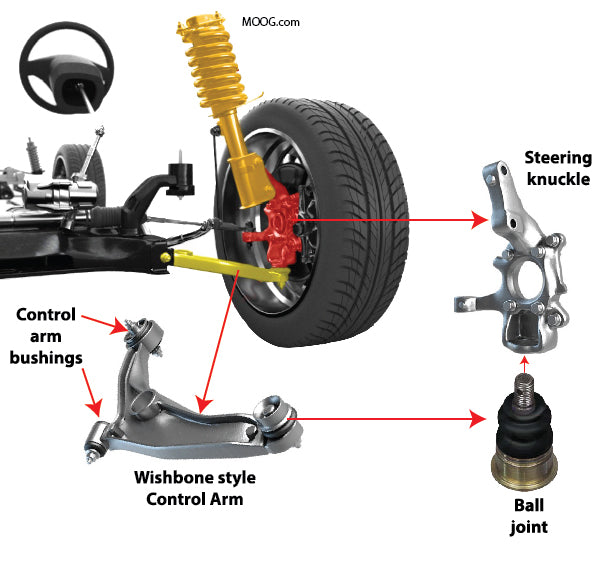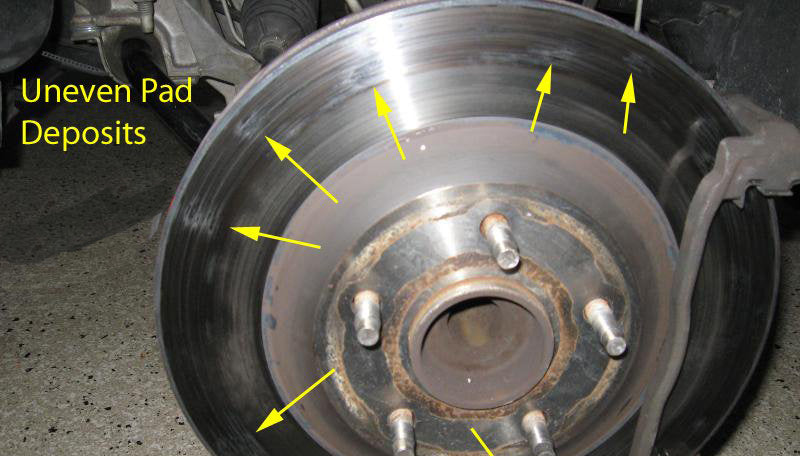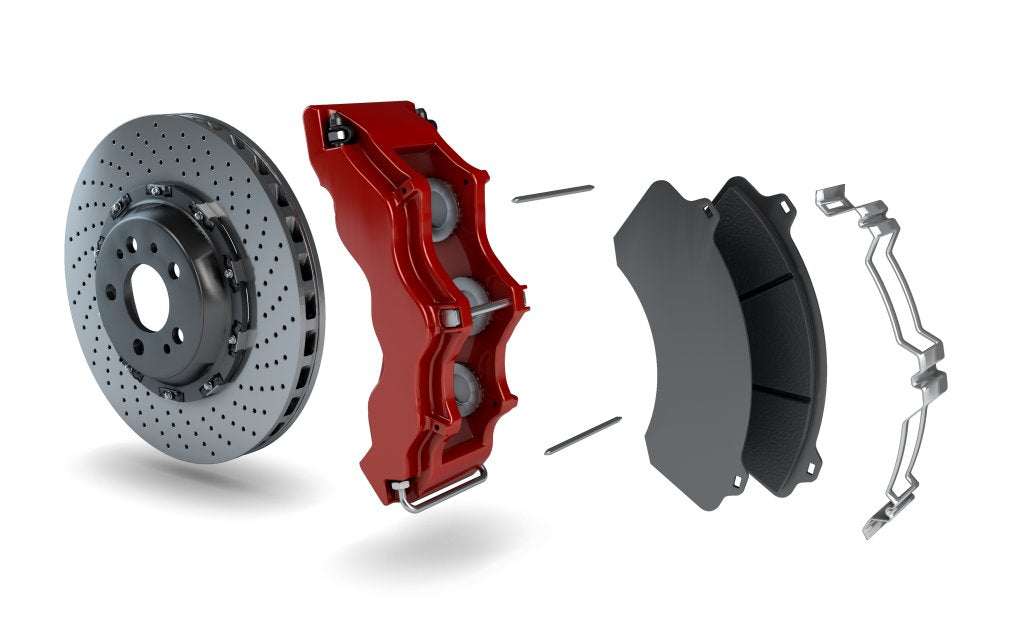Automotive Suspension: How Do They Work?
Automotive suspension plays an important role in providing a comfortable ride for drivers and passengers, by absorbing shocks from bumps on the road and helping to maintain traction with the surface of the road. Ensuring your vehicle’s suspension is functioning properly can make all the difference when it comes to smooth driving by making sure you don't feel every bump in the road. It also helps prevent premature tire wear due to poor contact between tires and pavement surfaces. Automotive suspension service and high quality parts by Spring Works in Santa Rosa, California. Get it done right by suspension experts.
Keeping up-to-date with regular maintenance checks like inspecting ball joints, shock absorbers/struts or bushings will go a long way towards preserving your vehicle's performance. It will also improve your driving experience as well as keep you safe on any terrain encountered out there.
What Does A Car Suspension Do?
Car suspensions are designed to help maximize the amount of contact between the road and the tires. This contributes to more comfortable car rides and ensures the driver has stable steering and great handling. Our roads have so many imperfections, and suspension systems are designed to handle them and support the vehicle. The suspensions work by absorbing energy from the tires, allowing the body and frame of the car to remain stable. There are several principles that you need to understand to appreciate why a suspension is necessary in the first place. The suspension system and the parts that come with it solve the challenges associated with these principles to ensure a smooth and safe ride. Vehicle dynamics is the study of the forces at work on a moving car. Most automobile engineers consider the vehicle dynamics of a moving car from the following perspectives:
Car ride which is the ability to smooth out a bumpy road.
Car handling allows the car to safely accelerate, corner and brake.
Road isolation is how a vehicle can travel undisturbed over rough and bumpy roads. This can enable a car to go across rocky, uneven roads without being disturbed.
Road holding is the principle that tires need to be kept in contact with the ground. It ensures you can steer, brake, and accelerate safely.
Cornering is the ability of a vehicle to travel a curved path while minimizing body roll.
Suspensions come with two basic components namely; springs and dampers.
Springs: A suspension has three types of springs; coil springs, leaf springs, and torsion bars.
Coil springs are found in most modern cars,
Leaf springs are in older cars, four-wheel-drive vehicles and semi trucks. These are layers of metal (leaves) connected to the axle that flex under the weight of the car.
The torsion bar is a metal rod that links the car body to the suspension lower link. It twists to absorb bumps on the road and then returns to its original position.
Shock Absorbers (dampers) help control the compression and rebound of the springs. A shock absorber is a piston, within a cylinder, that is filled with oil and absorbs road shock. They help cushion the impact of a wheel striking a bump and shield the chassis from harm. They also stop the springs from continuously bouncing and help push the wheel back to the road.
Other suspension components include:
Ball Joints

The ball joint works as a rotation axis to smoothen the process since there are many rotational forces at play when a car turns.
Knuckle

The knuckle arm is also known as the steering or control arm and connects the suspension to the wheel. It is a very important part of the suspension system that works as a meeting point for the suspension and the wheel.
Struts

Struts are structural parts of the suspension. They usually combine several suspension parts in one assembly including the shocks and coil springs.
Control Arms

Control arms are a core component of your front and rear suspension system. Control arms connect your wheels to your vehicle to the frame/unibody. One end connects to the wheel assembly and the other end connects to the framework of your car. Upper control arms connect to the uppermost area of the front wheel and the lower control arm connects to the lower most area of the front wheel,
Types of Suspension Systems
Suspensions vary depending on the body types and even the brands of the vehicles. Here are common automotive suspension types.
Suspension Systems
Two wheels are connected by the front axle and other the two wheels are connected by the rear axle. This means that every car has a different type of suspension on the front and back.
A car’s movement is dependent on whether the wheels are permitted to move independently or if a rigid axle binds them. The former arrangement is known as a non-independent (dependent) system, while the latter arrangement is known as an independent system.
Non-independent Suspension Systems
Non-independent (dependent) suspensions have a rigid front axle that connects the front wheels. The right and left wheels share a single, solid axle. These suspensions look like a solid bar under the front of the car and are kept in place by leaf springs and shock absorbers. They can be found upfront in trucks and are still common with rear suspension on cars.
ProTip Takeaway: One problem with non-independent suspension is that the jarring can be felt across the entire rear axle if one wheel hits a bump and it’s not great with preventing body roll.
Independent Suspension Systems
An independent suspension is a suspension system where each wheel is independent of the other. This means that any jarring is contained to one side or wheel offering a more comfortable ride and control.
MacPherson Strut
MacPherson Strut was developed by Earle S. MacPherson of General Motors in 1947. It is the most widely used front suspension system because it's effective and simple.
It works by combining a shock absorber and a coil spring into a single strut to provide a more compact and lighter suspension system. This makes it particularly useful for front-wheel drive vehicles.
Double wishbone suspension
The double-wishbone suspension is another common front suspension type, also known as an A-arm suspension or control-arm suspension. It uses two wishbone-shaped arms with two mounting positions at the frame and one at the wheel. There are several different possible configurations where the coil spring and damper are on a strut linked to the bottom wishbone and chassis. This double-wishbone suspension helps reduce roll and is common on larger cars.
ProTip Takeaway: Double wishbone suspension is very durable and it would be quite a while before it would need a repair or a replacement. They are also very complex and heavy structures, so, if they need to be repaired they would require a skilled mechanic, lots of time, and lots of money.
Multi-link suspension
Multi-link suspension uses one or more longitudinal arms and three or more lateral arms. These arms can be angled in any direction allowing for a better compromise between ride and handling. They are more likely to be found on performance cars.
Air Suspension
Air suspension, also known as air springs, uses air bellows in place of the usual coils and dampers. These air bellows are filled with air using an air compressor and can be deflated to adjust the ride height of the vehicle. An air suspension is a very comfortable and load-bearing suspension that is used on most top-of-the-line luxury and sports cars. They are also used on many trucks and buses due to their load-bearing capacity. Air suspensions are very adaptive and can be used together with an onboard computer to adjust to any load or height to suit requirements.
Common Signs of Suspension Wear and Tear
Different parts of the suspension system can wear out or become damaged with time. It's important to be conscious of any indications that a part may need maintenance or replacement. Common indicators to check for include:
The car pulls to one side. If your car is drifting or pulling to one side of the road, this can be a sign that the shocks are having trouble stabilizing the body of your vehicle.
Clunking noises. You may feel loud noises happening when you hit a bump or other imperfections in the road which could be a sign of a suspension issue.
Car vibrations. Vibrations coming from the steering wheel area could indicate issues with the shock absorbers in the suspension system.
Ride Height Issues. The corner of your vehicle can be caused to sit lower to the ground due to worn-out or damaged springs in your suspension.
Increased bumpiness. You may feel an increase in bumpiness while driving if there is damage or worn suspension parts.
Uneven tire wear. The suspension system is meant to hold the tires in alignment. If there is an issue, you might notice there is irregular wear on the tread of your tires.
Final Thoughts
Vehicle manufacturers design vehicles to meet the requirements of as many people as possible so as to sell more vehicles. When looking for a new vehicle, it is important to consider how it will be used and then determine which suspension system will work best for you.



